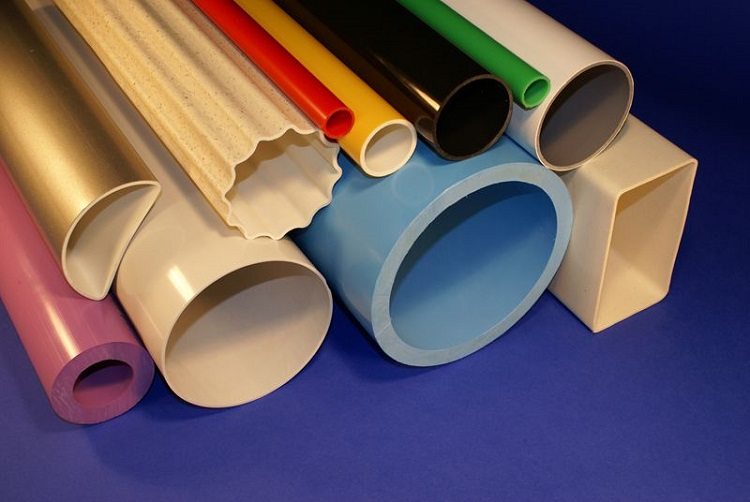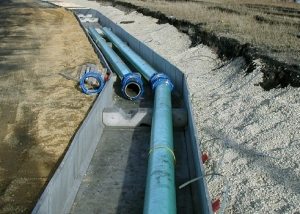The service life of utilities largely depends on the type of pipes used. Today, polypropylene products are especially popular. Due to their attractive physical and operational characteristics, they occupy a decent niche in volume in this segment of the building materials market. And fastening polypropylene pipes to the wall is not a difficult process at all.
Content
Types of materials for the production of polypropylene pipes
Having decided to use polypropylene products to create the pipeline, it is necessary to make their right choice. As a raw material, modern industry uses the following types of this material.
- Pph. It is a polypropylene homopolymer. Its brittleness at low temperature is completely leveled by bending strength. With the help of various additives PPH - polypropylene can be given fire resistance, transparency and antistatic.
- PPC. This material is obtained as a result of the copolymerization of ethylene and propylene. Compared to PPH˗ polypropylene, it is characterized by increased strength and elasticity.
- PPB. Block copolymer.
- Ppr. Statsopolymer.
- Pprc (random copolymer). Polypropylene copolymer. Lightweight and durable material. It does not collapse when water freezes. Able to work in a wide temperature range of -10˚С≤ T˚≤ + 90˚С. It is characterized by resistance to alkalis and acids.
- mPP. Metallocene polypropylene. May have properties similar to rubber.
In the distribution network, you can easily find polypropylene pipes made from all of the above materials. And having bought a suitable option, you can proceed to pipeline laying.
Mounting methods and elements for fastening pipes
To fix the pipe to the wall, plastic elements are most often used. If the diameter of the pipes is large, then metal fasteners are also used.
Mounting with clips
The main advantage of such a fastening for polypropylene pipes is the ease of installation: fixing to the surfaces is carried out using self-tapping screws. Other benefits of using clips include:
- due to the ability to work in a wide temperature range, with their help it is possible to fix pipelines for various purposes;
- elimination of the risks of pipe bends when the polypropylene pipes are correctly fixed to the wall. The distance between the fasteners is the main point that should be given special attention;
- the aesthetically attractive appearance of the clips allows you to create pipelines without hiding at the final stage.
If there is a need to disconnect the pipe, with a clip it is very simple to do and no tools are needed.
Such elements are most often used as fasteners for polypropylene pipes for water supply and heating. Their installation can be implemented on the surface of wood, drywall, brick and concrete. For fixing two parallel pipelines, the following options exist: the use of two single or one double clip.In this case, we must proceed from the estimated distance between the lines.
Novice masters will be able to get an idea of the optimal distance between the pipes from the table below.
Table 1
| Pipe diameter, millimeters | Distance at a certain temperature, centimeters | ||||
| + 20˚С | + 40˚С | + 60˚С | + 70˚С | ||
| 16 | 75 | 70 | 65 | 55 | |
| 25 | 85 | 85 | 75 | 70 | |
| 40 | 110 | 105 | 95 | 85 | |
| 75 | 155 | 150 | 130 | 115 | |
| 110 | 185 | 175 | 160 | 140 | |
Single clips are easy to interconnect without tools. This is convenient if you need to secure two or more pipes side by side.
Helpful information. As an optional accessory, clips may include special straps. Their use will prevent inadvertent popping of the clamped pipe from the fixed support.
The installation of polypropylene pipes to the wall includes the following steps:
- Marking of drilling sites for clips.
- Drilling holes with a punch.
- Plastic dowels clips are inserted into the holes, after which they are pressed against the wall.
- The pipe is inserted into the clip, which first expands and then contracts, tightly wrapping around the element of communication.
Mounting with clamps
Clamps can also be used with success for fixing pipes made of polypropylene. They are a metal or plastic structure, bolted together. With the help of clamps, the following types of fasteners are carried out:
- tough. The places in which the clamps completely tighten the pipes to be mounted are called hard fixation points. The result of their work is the complete absence of pipeline displacement. Hard mount sewer pipes It is customary to perform in the immediate vicinity of the bell and below it;
- floating. To create this type of fasteners, the same clamps are used, but in this case they are not completely tightened. This technique is relevant for hot water supply and heating pipelines, the geometric dimensions of which can vary depending on temperature fluctuations. To do this, you must choose a clamp, the diameter of which is greater than the same parameter of the pipe.
You can choose a clamp with a rubber gasket or without one. But for noise and vibration isolation it is still preferable to buy with this element.
Distances between floating fixtures on a horizontal water supply pipe made of PPR-polypropylene, depending on the outer diameter of the pipes, are shown in table No. 2.
table 2
| D nar. pipeline mm | Hot water pipe | Cold water pipe |
| 16 | 500 | 500 |
| 20 | 550 | 600 |
| 25 | 650 | 750 |
| 32 | 750 | 900 |
| 40 | 850 | 1050 |
| 50 | 1000 | 1200 |
| 63 | 1150 | 1400 |
| 75 | 1250 | 1500 |
| 90 | 1400 | 1600 |
| 110 | 1700 | 1500 |
Creating an external sewage system, it is necessary to be guided by the following requirements:
- large diameter pipes can be mounted using only metal clamps. Experts recommend purchasing interface elements of the same brand from one manufacturer;
- the distance between the fasteners of pipes made of polypropylene with a diameter of up to 50 mm should not exceed 400 mm. For pipes with a diameter of 100 mm or more, this figure is 800 mm. This requirement applies to typesetting sewer systems;
- special attention should be paid to the alignment of the mounting for risers;
- the distance of the pipe from the wall should be at least 5 mm.
It is worth considering such a moment: for the rigidity of the sewage system, it is very important that the distance between the sunbed pipe and the wall is minimal.
Fastening polypropylene pipes of hot and cold water supply systems using clamps involves the following sequence of actions:
- Drawing fixation marks on the wall. You can define them using the data from the above tables.
- Drilling holes for plastic dowels with a puncher. In places where the pipes bend, additional clamps must be installed. Their distance from the corner should be about 150 millimeters.
- Insert dowels, followed by screwing the clamps all the way.If a steel clamp is used, it should be oriented perpendicular to the pipe itself.
- The lower screw that connects the half rings of the clamp is released, after which the front half ring is pulled down.
- Laying pipes in clamps. Its reliable fixation is carried out by tightening the half rings with screws.
To fix the hot water supply pipe, you should purchase clamps that do not impede the increase in the volume of polypropylene under the influence of high temperature. For an external sewage system, this requirement is irrelevant.
Regardless of the fasteners used for polypropylene pipes, the system should be tested at the final stage. To do this, fill the pipes with water and check for sagging and leaks. Having convinced of their absence, hand over the communication created by yourself in operation.








